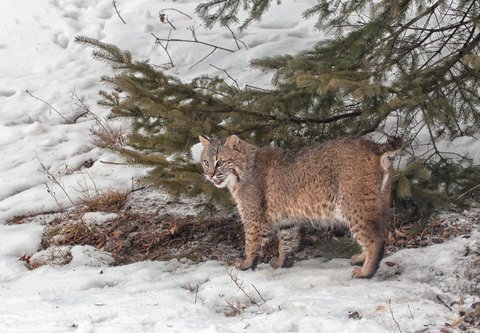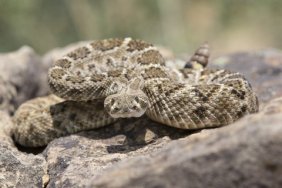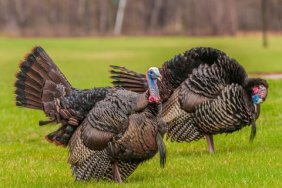It can be argued that the bobcat is one of the most elusive mammals to hunt in North America. It is solitary, has a broad range and is adept at avoiding detection. To be successful, a bobcat hunter needs high doses of patience and perseverance.
Compared to other game, bobcats are rarely seen, so finding them can take a great deal of effort, but knowing the basics of bobcat movement can significantly improve the odds of a successful hunt.
First, let’s take a look at bobcat habitat. Bobcats like dense forest with plenty of small mammals for prey. Common habitat includes aspen forest or cedar swamps. The typical range of a bobcat can stretch to 35 miles, so even if you know you are in a bobcat’s range, finding a single animal can be very difficult.
One of the keys to success is finding an area that is known to have a good population of bobcats. Within that area, select a few locations on which you can hunt and begin scouting those areas. Look for brush piles, dense low-lying vegetation or a water source – any habitat that attracts small prey. Bobcats will feed on a variety of prey, including rabbits, squirrels, birds and mice. They may also go after fawns, porcupines, coyotes or fisher. If you spot high levels of small animal activity, you know you are in a good spot.
Watch for tracks or signs of a fresh kill. Recent snowfall is especially helpful in identifying bobcat activity. A trail camera can also be a valuable tool when it comes to locating bobcats. Once you identify that a bobcat is in the area, try to track its movements. Does it seem to be going to the same areas frequently? In which areas is it most likely to pursue prey? Concentrate your efforts in these areas.
When it comes to the hunt there are three important factors that separate a good bobcat hunter from the rest: patience, stealth and calling technique. Find a location with a good vantage point and stay there. Remain still and quiet. A bobcat can hear or see you, long before you will see it, if you are not careful. Morning hours and dusk are the most active times for a bobcat.
Whatever type of calling device you are using, the best technique comes from successfully imitating distressed prey. Think about what a wounded rabbit would sound like. Use brief, intermittent calls to catch the bobcat’s attention. After you call, scan the landscape carefully for any movement. This is where patience comes into play. It may take 30 minutes, 60 minutes or more to bring a bobcat in to your location. And when it comes, it will approach cautiously and be difficult to see.
Bobcat hunting is a challenge, which will test the limits of any hunter’s skill. But that challenge is the attraction for many who pursue bobcats. Being prepared and following these key steps will greatly improve your odds of meeting that challenge.








